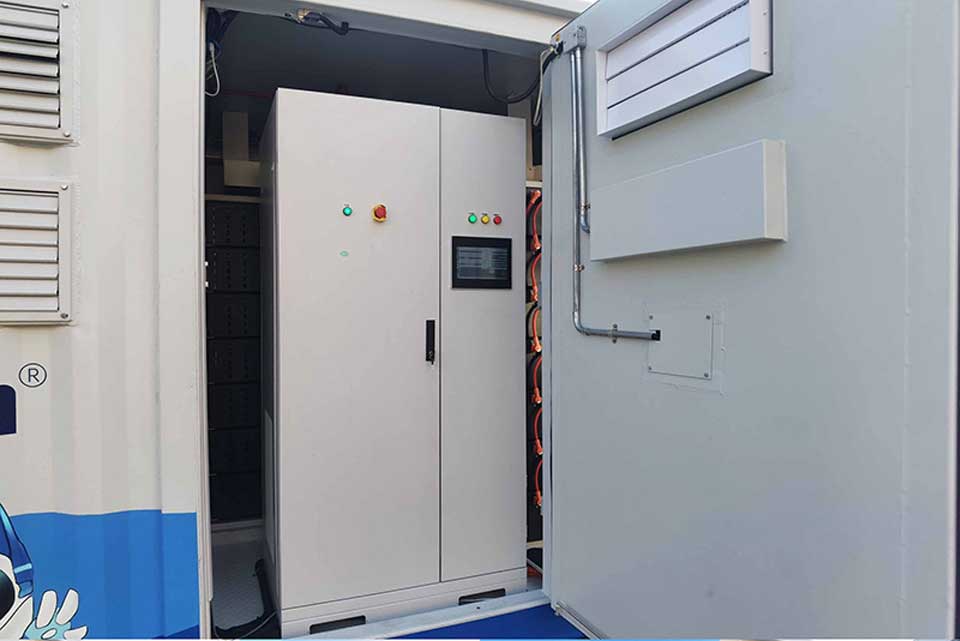"Industrial and commercial energy storage" pertains to energy storage systems utilized at the terminal end of industrial or commercial applications.
From the perspective of end-users, energy storage can be categorized into grid-connected (front-of-meter, large-scale storage) and customer-side (behind-the-meter) storage. Customer-side storage further divides into industrial-commercial storage and residential storage. To summarize, industrial-commercial storage falls under the customer-side storage category, serving industrial or commercial terminals. Its applications span across industrial parks, commercial hubs, data centers, telecommunication base stations, administrative buildings, hospitals, schools, and residential complexes.
From a technical architecture standpoint, industrial-commercial energy storage systems can be classified into direct current (DC) coupled systems and alternating current (AC) coupled systems. DC-coupled systems often manifest as integrated photovoltaic-storage units, comprising a photovoltaic-storage unit (including photovoltaic modules, controllers, battery packs, bidirectional power converters (Power Converting Systems, "PCS"), and Battery Management Systems ("BMS")), and an Energy Management System (EMS). The basic operation involves direct charging of the battery pack with DC power from photovoltaic modules or AC power converted to DC via PCS. When electrical loads require power, the battery discharges, centralizing energy at the battery end. AC-coupled systems include photovoltaic systems (photovoltaic modules and grid-tied inverters), storage power generation systems (battery packs, PCS, BMS), and EMS. Here, DC power from photovoltaic modules is inverted to AC and either fed into the grid, supplied to loads, or converted back to DC to charge the battery pack, with energy converging at the AC end. DC-coupled systems are characterized by lower costs and less flexibility, suitable for scenarios where daytime loads are low and nighttime loads are high. AC-coupled systems, though higher in cost, offer greater flexibility and are ideal for applications already equipped with photovoltaic systems or where daytime loads are high and nighttime loads are low. Typically, industrial-commercial storage architectures can operate independently of the main grid, forming microgrids with photovoltaic generation and battery storage.
"Arbitrage between peak and off-peak tariffs" is a common revenue model for industrial-commercial energy storage, involving charging from the grid during low tariff periods and discharging during high tariff periods.
China implements time-of-use and peak pricing policies for industrial-commercial users. Taking Shanghai as an example, the "Notice on Further Improving Our Time-of-Use Electricity Pricing Mechanism" (Shanghai Development and Reform Commission [2022] No. 50) stipulates that:
For two-part tariff industrial-commercial and large-industrial users, winter months (January and December) have peak hours from 19:00 to 21:00, while summer months (July and August) have peak hours from 12:00 to 14:00. During summer (July, August, September) and winter (January, December), peak hour prices are 80% higher than flat rates, off-peak prices are 60% lower, and peak prices are 25% higher than peak rates. Other months see peak hour prices 60% higher and off-peak prices 50% lower than flat rates.
For single-rate industrial-commercial users, only peak and off-peak periods are differentiated without peak periods. Summer (July, August, September) and winter (January, December) peak hour prices are 20% higher, and off-peak prices are 45% lower than flat rates. Other months have peak hour prices 17% higher and off-peak prices 45% lower than flat rates.
Consequently, industrial-commercial storage systems purchase low-cost electricity during off-peak hours and supply loads during peak or peak hours, reducing corporate electricity expenses.
"Energy time shifting" refers to load shifting achieved through energy storage. When users generate electricity using equipment like photovoltaic cells, mismatches between generation and consumption curves lead to selling surplus electricity at low prices or purchasing electricity at high prices from the grid. Users charge batteries during off-peak hours and discharge stored energy during peak load times, maximizing economic benefits and reducing carbon emissions. Additionally, storing curtailed wind or solar power for grid injection at another time is also energy time shifting. Energy time shifting does not impose strict timing requirements on charging and discharging, nor stringent power specifications, hence it is frequently applied.

You Can download our Following Excel and fullfill the file,send to our representive, Then our Engineer will give your evaluation, Usually reply you in 24 hours:
Choosing between single-phase and three-phase po
"Revolutionizing energy storage, advancements in
Here is an introduction to one of the best batte
Contact: Thomas
Phone: +8618025306280
Tel: +86-0755-32872175
Email: hello@raderenergy.com
Add: Block A, Ketujia Building, Fucheng Street, Longhua District, Shenzhen, PRC